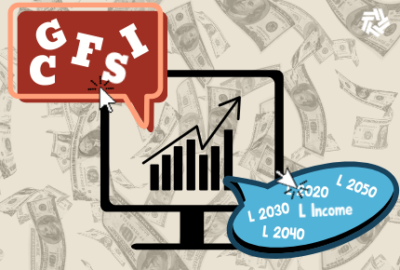TSP participants could save longer under Secure Act 2.0
House lawmakers passed the Securing a Strong Retirement Act, which will raise the age for starting required minimum distributions from TSP accounts.
The House of Representatives’ Securing a Strong Retirement Act is one step closer to becoming law. Under the bill, participants in the Thrift Savings Plan will see changes to their retirement distributions.
The House passed the bill 414 to 5 on March 29. In general, the Secure Act 2.0 covers employee retirement distribution changes. Two pieces of the legislation will affect TSP participants, along with workers who have private employer-sponsored retirement plans.
The Securing a Strong Retirement Act would increase the age for starting required minimum distributions (RMDs). That means the age at which TSP participants are required to start distributions from their retirement accounts will increase.
That age currently sits at 72 years old, but the bill would increase the age to 75 years old in a phased approach over the next 10 years. Those changes apply starting in 2023 for TSP participants. The House Rules Committee adjusted the dates included in the bill prior to the House vote. The new language in the legislation pushed the original 2022 date for the RMD change back to 2023.
| RMD starting age | Participants affected | Years in effect |
| 72 | Currently 72 and older | Current |
| 73 | Turning 72 starting in 2023;
Turning 73 before 2030 |
2023-2029 |
| 74 | Turning 73 starting in 2030;
Turning 74 before 2033 |
2030-2032 |
| 75 | Turning 74 starting in 2033 | 2033 onward |
The National Active and Retired Federal Employees Association (NARFE), which is in support of the legislation, said the bill will help participants keep their money in the market longer. That’s especially useful as consumer prices continue to rise, NARFE said.
“This legislation takes aim at our country’s looming retirement crisis and contains several provisions that benefit the retirement security of hardworking Americans, including federal employees and retirees,” National President Ken Thomas said in a letter to House lawmakers.
NARFE said the legislation will also help TSP participants to hedge against market uncertainty. Russia’s invasion of Ukraine and high inflation rates heighten insecurity about retirement accounts and savings. The Secure Act 2.0 aims to relieve some of that uncertainty.
“The House is acting on a bipartisan basis to expand automatic enrollment in companies’ retirement plans, encourage more companies to offer and contribute to their workers’ plans and allow those near retirement to save more and for longer,” House Majority Leader Steny Hoyer (D-Md.) said in a press release.
The second component of the bill that would make changes for participants relates to catch-up contributions for employer-sponsored plans.
Catch-up contributions help participants “catch up” on retirement savings when or if necessary. They’re above the annual maximum contribution limit, which is $20,500 for 2022.
The Committee also adjusted the date for implementing the changes to catch-up contributions, which will now occur once the bill is enacted.
Under the legislation, all catch-up contributions starting in 2023 must be made to Roth accounts. Currently, those contributions can be made either on a Roth or on a pre-tax basis, if the employer sponsor allows it.
This changes the taxing of catch-up contributions. Roth contributions are made post-tax, then not taxed upon withdrawal after retirement. That contrasts with traditional contributions to TSP accounts, which are made pre-tax and then taxed upon withdrawal.
The maximum amount of annual catch-up contributions will also change for some TSP participants under the bill. The legislation increases the catch-up contribution limit to $10,000 for those between ages 62 and 64.
Currently, that catch-up contribution limit is $6,500 for TSP participants ages 50 and up. Under the bill, those between ages 50 and 61, and those over 65, will remain at that limit.
The bill increases the catch-up contribution limit for that group starting in 2024. Those catch-up contributions will also be indexed for inflation.
The House is urging the Senate to pass the legislation so it can go to the president for signing as quickly as possible.
Copyright © 2025 Federal News Network. All rights reserved. This website is not intended for users located within the European Economic Area.
Drew Friedman is a workforce, pay and benefits reporter for Federal News Network.
Follow @dfriedmanWFED





